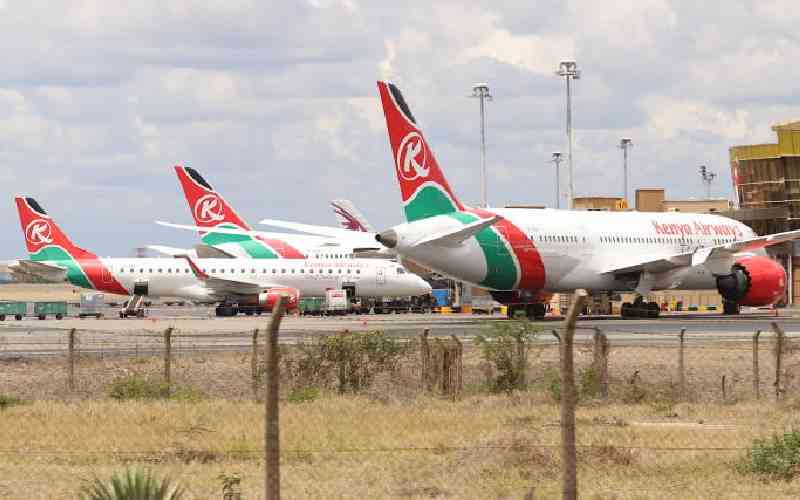A few years ago I was a first-time flyer. I was so excited by the fact that I was flying to a new destination.
I went to an extent of even researching online for tips on how to conduct myself, and perhaps foresee probable hitches that I would encounter and thus avoid them.
Being a typical villager from the slopes of Mt.Kenya by default settings, I had never come into contact with a big plane before.
However, once upon a time as an intern, I did hitch a ride in a Cessna for fun somewhere near Amboseli and the experience was quite unpleasant.
The plane went up like a drunken duck and by the time we were back down I had to gamble with serious periods of nausea. Here are a few tips to prepare you for your first flight;
1. Your flight ticket or itinerary
Your flight ticket holds very vital information. You should always confirm that all the printed information is okay.
Most important are your names, the travel dates, departure and arrival times as well as the flight number.
The ticket also details the check-in time, the airports your are flying between and your baggage allowance. In some instances, some airline will only give you a confirmation number.
2. Arrival and check-in
Most airlines recommend arriving at the airport three hours before departure time. It is important to find out from which terminal your airline operates from before your travel date.
Most airports have domestic and international arrival and departure areas. Once you have all that figured out, the next step should be to get through security check and check-in at relevant check-in desks.
The Check-in desks always have flight numbers and airline names displayed.
Here, have your flight ticket and passport ready.
The check-in agent asks some security questions and prints your boarding pass. Your luggage is also weighed and tagged with the flight details.
Some airlines offer online check-ins while some airports have self-service check-in kiosks. These help you avoid lengthy queues, giving you more time to explore duty-free shops and food outlets.
3. Your luggage
It’s important to have means of weighing your luggage before getting to the airport. Airlines have maximum allowed baggage weight limits that are clearly inscribed on your flight itineraries and tickets.
This varies between airlines and also classes of travel. For example, in some instances, baggage allowance for business class may be more than that of the economy class of travel.
Always check with your airline if not sure. Hold Baggage. These are large items you check-in with, such as suitcases and rucksacks.
These cannot be brought on board and therefore are carried in the hold of the aircraft. Once they are left at the check-in desk, you will not see them until you land at your destination.
However, hand luggage is allowed onboard the aircraft. Most Airlines allow any luggage that does not exceed 56cm x 45cm x 25cms.
4. Boarding gates
Your boarding pass has the boarding gate mentioned as well as your seat number. Once done checking-in, you will head to the security control area where you will show your boarding pass and have your hand luggage screened.
For international flights, you will have your passport stamped at this section by passport control or immigration officers.
Display screens at most airports will let you know when you can head over to your departure lounge. Some airports like Jomo Kenyatta International Airport (JKIA) also run verbal announcements for passengers to head to their departure lounges.
Past this stage, you can now enjoy tax-free shopping. However, you should always hang around your boarding gate area and if possible wait at the departure lounge at your gate.
5. Boarding
Once boarding time comes, display screens and in some airports verbal calls will remind you the gate number you are supposed to board from.
Then the airline attendants will call you and other passengers in a sequence. Once your time comes, hand over the boarding pass to them and board the plane.
A small portion of the boarding pass is left with you. A member of the airline’s cabin crew checks the remaining boarding pass portion and welcomes you onboard the plane ushering you to your seat
6. Arrival at destination
When you arrive at your destination, Airline agents will show you the way to security and passport control desks, after which you will proceed to the baggage claims area.
The display screens will show you the flight number, usually above the carousel that your baggage will be on. From here, you will go through the customs section and finally exit to the arrivals hall.
At the arrivals hall, you can link up with the person who had come to pick you up or grab an airport cab to your intended destination.
7. Security
It’s very important to be aware of your surroundings. Always keep your valuables on you or hidden deep in your carry-on.
Do not and never accept luggage from strangers. You should always ensure that your luggage is clear of prohibited items ( sharp objects, firearms, drugs, and illegal substances among many others).
In case you are not sure if what you intend to travel with is or not allowed, always enquire from your travel agent or airline before the travel dates. When picking cabs/taxi especially in foreign cities, it's better to ask your airline to recommend you a reliable taxi company.
 The Standard Group Plc is a
multi-media organization with investments in media platforms spanning newspaper
print operations, television, radio broadcasting, digital and online services. The
Standard Group is recognized as a leading multi-media house in Kenya with a key
influence in matters of national and international interest.
The Standard Group Plc is a
multi-media organization with investments in media platforms spanning newspaper
print operations, television, radio broadcasting, digital and online services. The
Standard Group is recognized as a leading multi-media house in Kenya with a key
influence in matters of national and international interest.
 The Standard Group Plc is a
multi-media organization with investments in media platforms spanning newspaper
print operations, television, radio broadcasting, digital and online services. The
Standard Group is recognized as a leading multi-media house in Kenya with a key
influence in matters of national and international interest.
The Standard Group Plc is a
multi-media organization with investments in media platforms spanning newspaper
print operations, television, radio broadcasting, digital and online services. The
Standard Group is recognized as a leading multi-media house in Kenya with a key
influence in matters of national and international interest.









